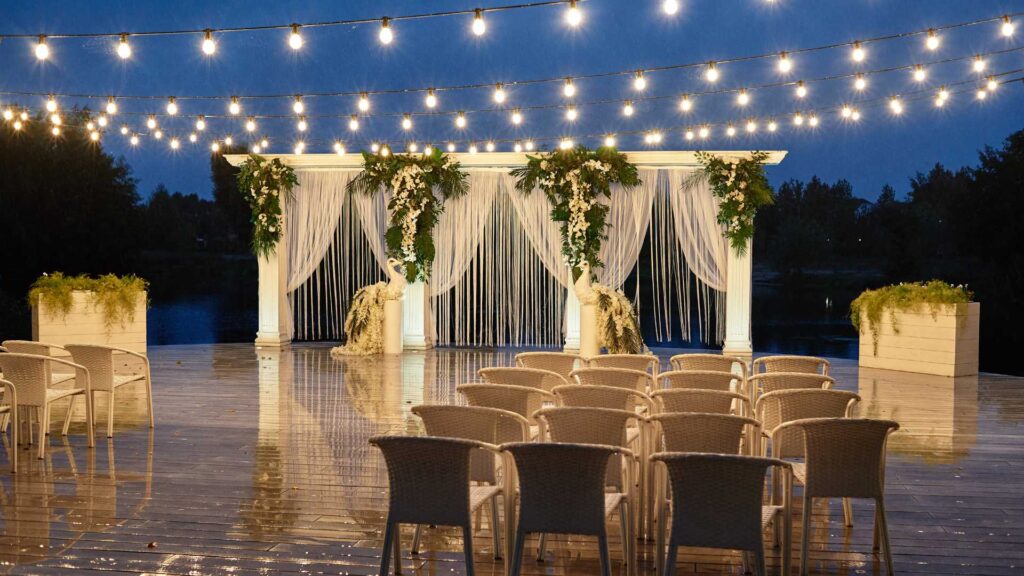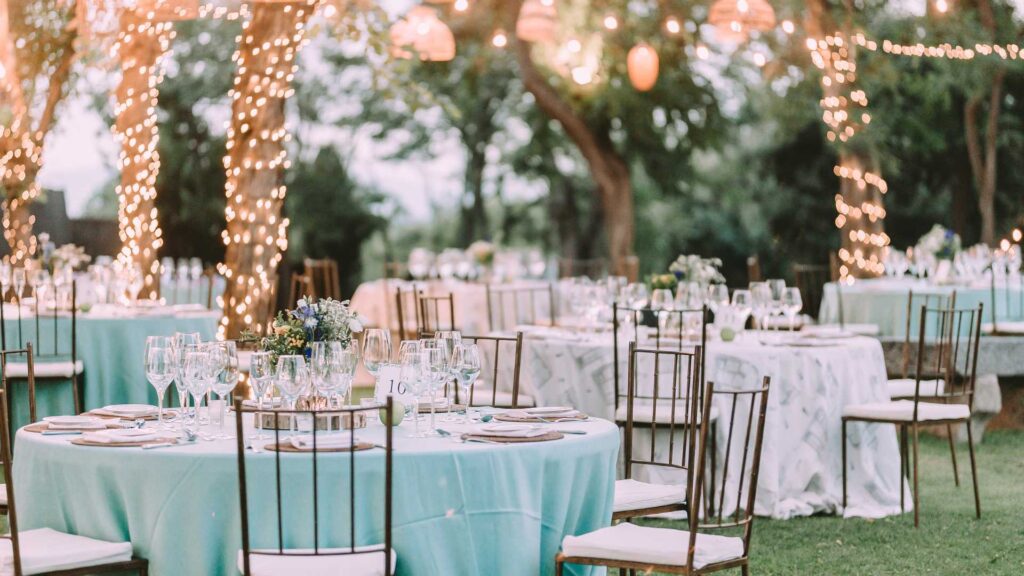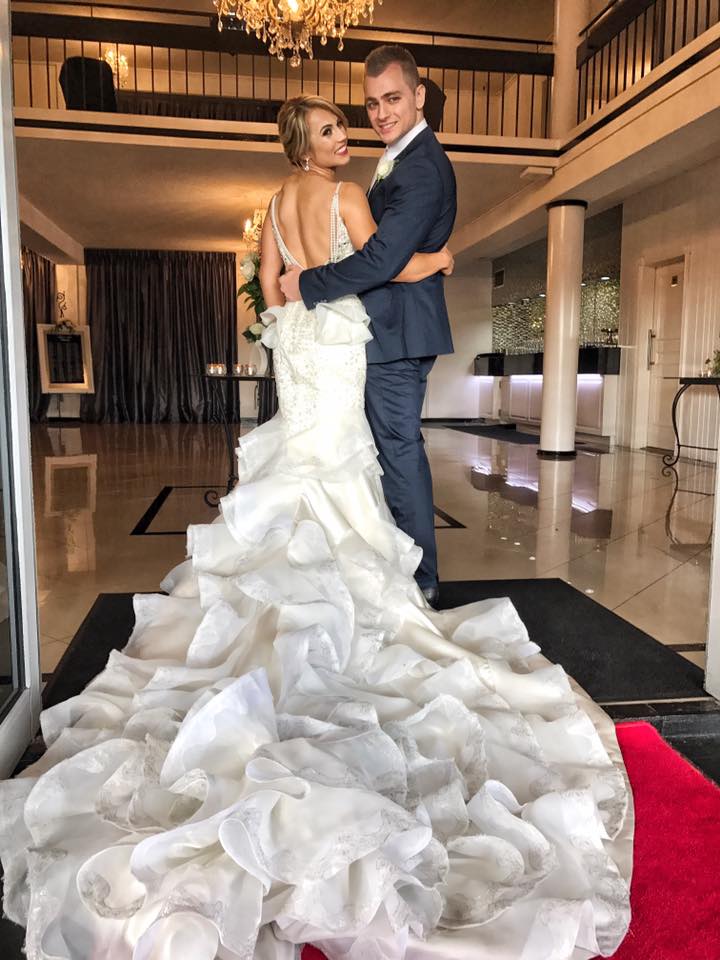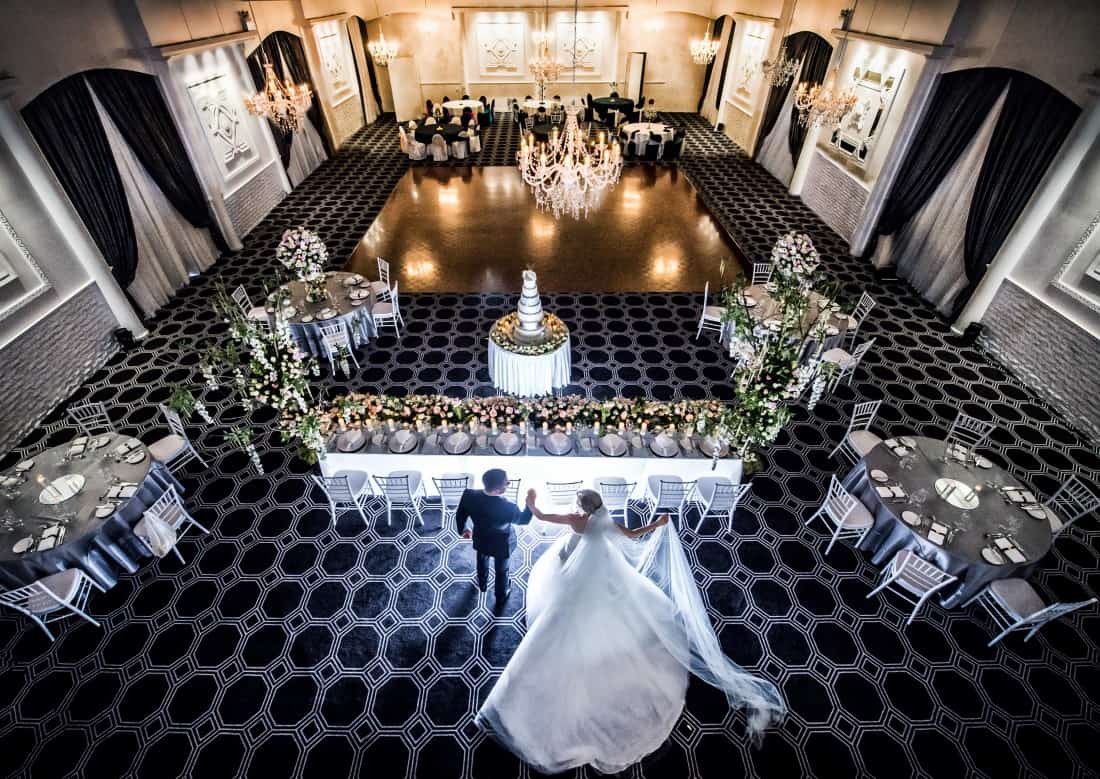When planning your dream wedding, every detail matters, and lighting is one of the most impactful elements in setting the tone for your special day. Among the various lighting techniques available, uplighting is a versatile, cost-effective option that completely transforms your venue. Whether you want to add a soft, romantic glow, highlight architectural features, or create a vibrant atmosphere, uplighting can be the key to achieving your vision.
Let’s Get Straight to the Point
Uplighting is a cost-effective and versatile technique that can transform your wedding venue by placing lights on the ground to project light upwards. The number of uplights needed depends on your venue size, layout, and desired ambience. High-quality LED fixtures are recommended for the best results.
Consider DIY uplighting for budget-friendly options, but ensure proper placement. Both uplighting and downlighting have unique benefits, with uplighting ideal for highlighting walls and architectural features. Proper planning and strategic light placement can create a stunning and memorable atmosphere for your wedding day.
Understanding Uplighting: What It Is And How It Works
Uplighting involves placing light fixtures on the ground to cast light upward, illuminating walls, columns, and other architectural elements. This method effectively creates depth, highlights key areas, and adds colour to your venue. Unlike overhead lighting, which can sometimes be harsh or unflattering, uplighting provides a more subtle and elegant way to enhance the overall aesthetic of your wedding space.
How Many Uplights Are Needed For Your Venue?
When considering uplighting, one of the couples’ most common questions is how many fixtures they’ll need. The answer varies depending on several factors:
- Venue Size: The size of your venue is the primary factor in determining how many uplights you’ll need. For a standard ballroom, start with 14 to 20 lights. Larger venues or those with unique layouts, such as multiple rooms or outdoor areas, may require 24 to 32 lights or more to ensure complete coverage.
- Room Layout and Features: Consider your space’s specific layout. Are there unique architectural features like columns, staircases, or alcoves that you want to highlight? These areas may need additional lights to ensure they stand out. Similarly, if your venue has more than one floor, you might need extra lights to cover each level adequately.
- Guest Count and Event Type: The size and style of your event also influence the number of uplights needed. A more intimate gathering might require fewer lights to create a cosy atmosphere. At the same time, a large celebration with hundreds of guests might benefit from more extensive lighting to maintain a lively and energetic ambience.
Key Considerations For Effective Uplighting
To get the most out of your uplighting, consider the following tips:
- Highlight Key Areas: Focus on areas central to your wedding experience, such as the cake table, sweetheart table, or dance floor. Uplighting these spots can make them focal points, ensuring they receive the attention they deserve.
- Consider the Shape and Size of Columns: If your venue features columns, it’s important to consider how they will be lit. Smaller columns only need one or two uplights, while larger ones require four or more to ensure they are illuminated evenly from all sides.
- Use Professional-Grade Fixtures: To achieve the best results, it’s crucial to use high-quality, professional-grade LED fixtures. These lights should emit at least 7,000 LUX at 1 metre to ensure vibrant colours and strong illumination. For larger spaces or areas where true colour accuracy is important, consider using lights with a lumen rating of 20,000 or above.
Balancing Ambiance And Practicality
While uplighting is often used to create a specific mood or atmosphere, it’s also important to consider practical aspects, such as ensuring adequate visibility and avoiding harsh shadows. Here’s how you can balance ambience with practicality:
- Adjust Lighting Intensity: The intensity of your uplighting should match the mood you want to create. Lower the brightness for a soft, romantic feel and choose warmer colours. Brighter lights and bolder colours may be more appropriate if you aim for a lively and energetic atmosphere.
- Test and Adjust: During the setup, it’s important to test the lighting to ensure it meets your expectations. Wedding lighting experts will often make adjustments on the day of the event, tweaking the placement and intensity of the lights to eliminate dark spots or overly bright areas.
Cost Considerations For Wedding Uplighting
The cost of uplighting can vary significantly depending on several factors, including the number of lights needed, the complexity of the setup, and the specific requirements of your venue. Here are some factors that can influence the cost:
- Venue Accessibility: The setup time and cost might increase if your venue is in a difficult-to-access location, such as a downtown area with limited parking for trucks and trailers.
- Setup and Breakdown Time: Setting up and taking down the lighting can also affect pricing. If your event requires a quick turnaround or involves complex setups, such as lighting multiple rooms or levels, this could increase labour costs.
- Number of Helpers Needed: Depending on the complexity of the setup, additional staff may be required, which can also impact the overall cost.
DIY Uplighting: A Budget-Friendly Option
For couples working with a tighter budget, DIY uplighting is a viable alternative to hiring a professional. You can purchase or rent affordable LED lights and position them around your venue. While this option can save money, it’s important to be mindful of a few key points:
- Venue Restrictions: Before opting for DIY uplighting, check with your venue to ensure no restrictions on bringing in external lighting equipment.
- Equipment Quality: When renting or buying uplights, ensure they are of sufficient quality to achieve the desired effect. Low-output lights may provide a different brightness or colour accuracy than professional-grade fixtures.
- Placement and Setup: Proper placement is important to achieving the right look. Experiment with different positions and angles to ensure that your uplights highlight the key areas of your venue without creating unwanted shadows or glare.
Uplighting Vs. Downlighting: Which Should You Choose?
While uplighting is a popular choice for weddings, downlighting can also play an important role in your overall lighting scheme. Here’s how the two compare:
- Uplighting highlights vertical surfaces, such as walls, columns, and trees. It adds depth and dimension to your venue, making it appear more dynamic and visually interesting.
- Downlighting, however, is more effective for illuminating horizontal surfaces, such as walkways, tables, and outdoor seating areas. It provides a more subtle and focused light, often used to create a warm and inviting ambience in outdoor spaces.
Depending on your venue and the overall look you’re trying to achieve, you may incorporate uplighting and downlighting into your lighting plan.
Maximising The Impact Of Outdoor Uplighting
Outdoor uplighting can be especially effective in creating a dramatic and memorable environment. Here are some ideas to maximise its impact:
- Illuminating Trees: Uplighting can beautifully highlight large, striking trees, such as Japanese Maples. By placing a light at the tree’s base and directing it upward, you can showcase the intricate texture of the bark, branches, and leaves, creating a stunning focal point in your outdoor space.
- Highlighting Columns and Facades: Use uplighting to accentuate the architectural features of your venue’s exterior. This can make your venue look even more impressive after dark and create a grand entrance for your guests.
- Garden Features: If your venue has a beautiful garden, consider using uplighting to highlight specific features, such as a water fountain, statues, or favourite plants. This will add a layer of beauty and intrigue to your outdoor spaces, making them even more enjoyable for your guests.
Achieving Seamless Coverage
When looking at photos of uplighting, you might notice that the light appears evenly distributed across the walls and ceiling, creating “seamless coverage.” While this effect is visually stunning, achieving it requires careful planning and a higher number of lights:
- Strategic Placement: To achieve seamless coverage, lights must be placed at regular intervals around the room, ensuring that each wall section is evenly lit. This might require more lights than anticipated, especially to avoid dark spots or uneven lighting.
- Consider Light Overlap: By slightly overlapping the beams of light from each fixture, you can create a more continuous and cohesive look. This technique achieves that seamless appearance that’s often seen in professional photos.
Uplighting is more than just a decorative element; it’s a powerful tool that can transform your wedding venue and create the perfect atmosphere for your big day. Whether you’re looking to add warmth and romance, highlight architectural features, or create a vibrant, energetic space for dancing, uplighting offers a flexible and affordable solution.
By carefully considering the number of lights needed, the layout of your venue, and the desired ambience, you can use uplighting to elevate the look and feel of your wedding, making it an event that your guests will remember for years to come.
Ultimately, the key to successful uplighting is in the planning. Whether you hire a professional or take the DIY route, the right lighting can make all the difference, turning your wedding venue into a stunning, unforgettable setting that reflects your unique style and vision.




